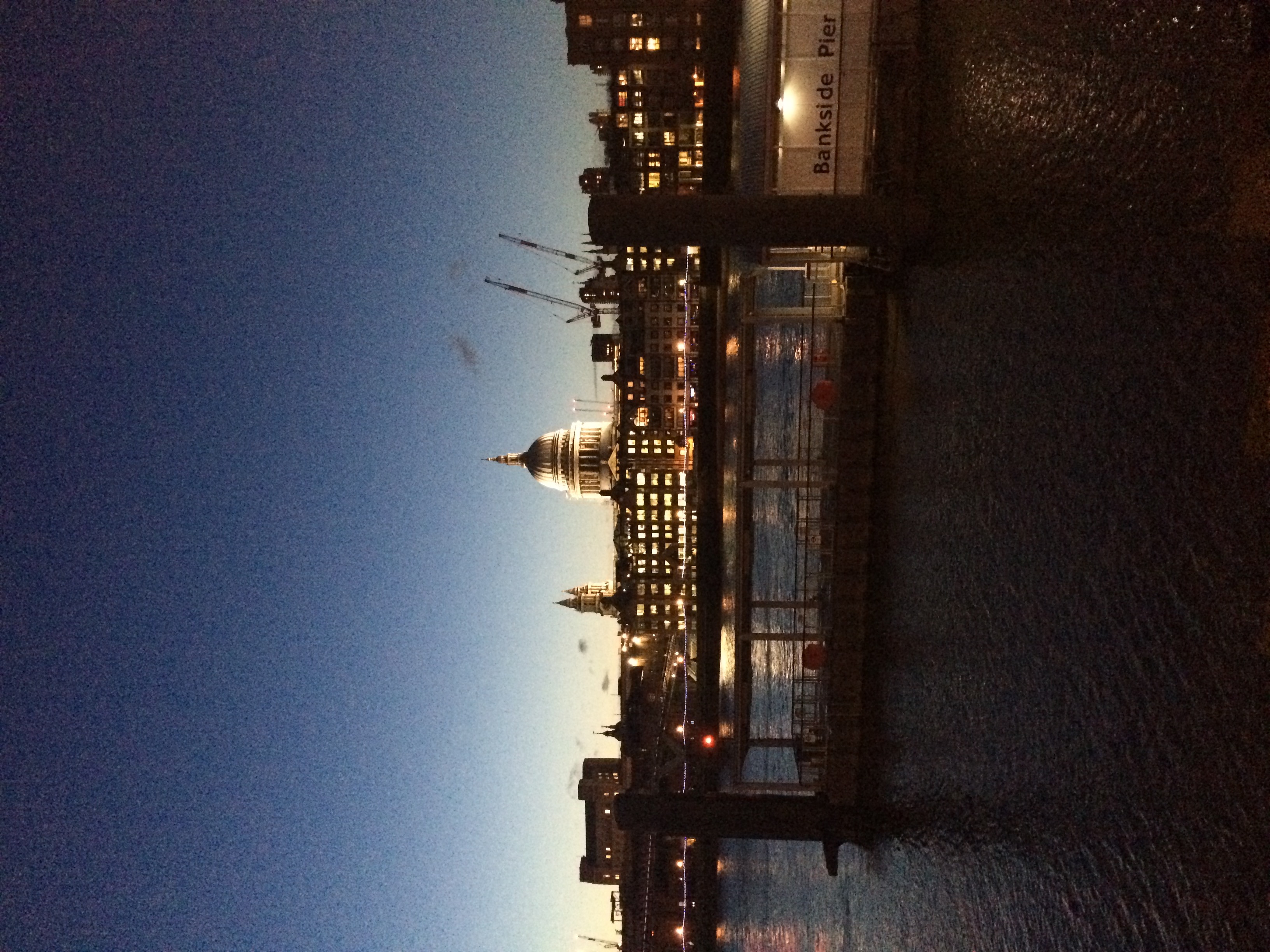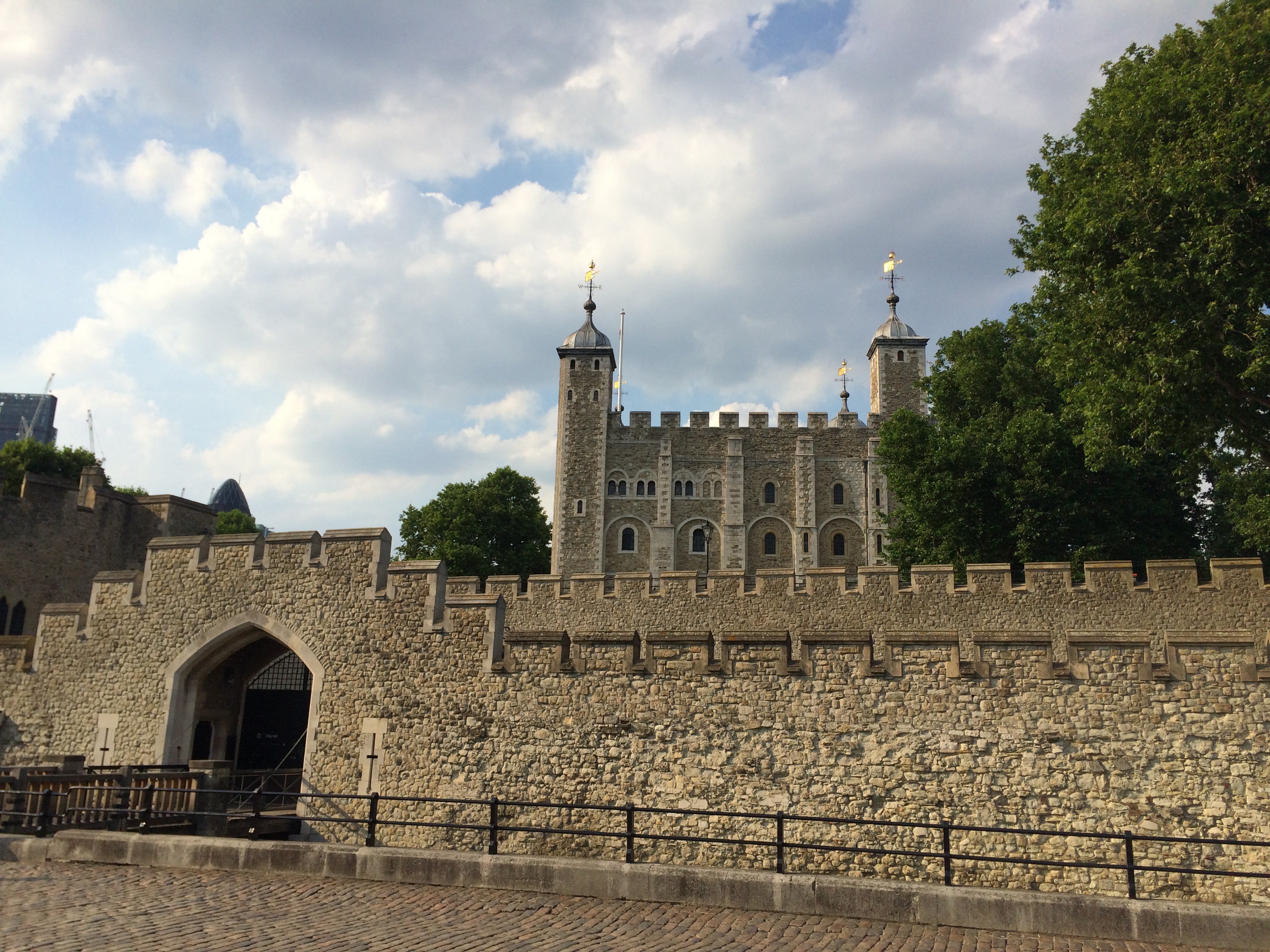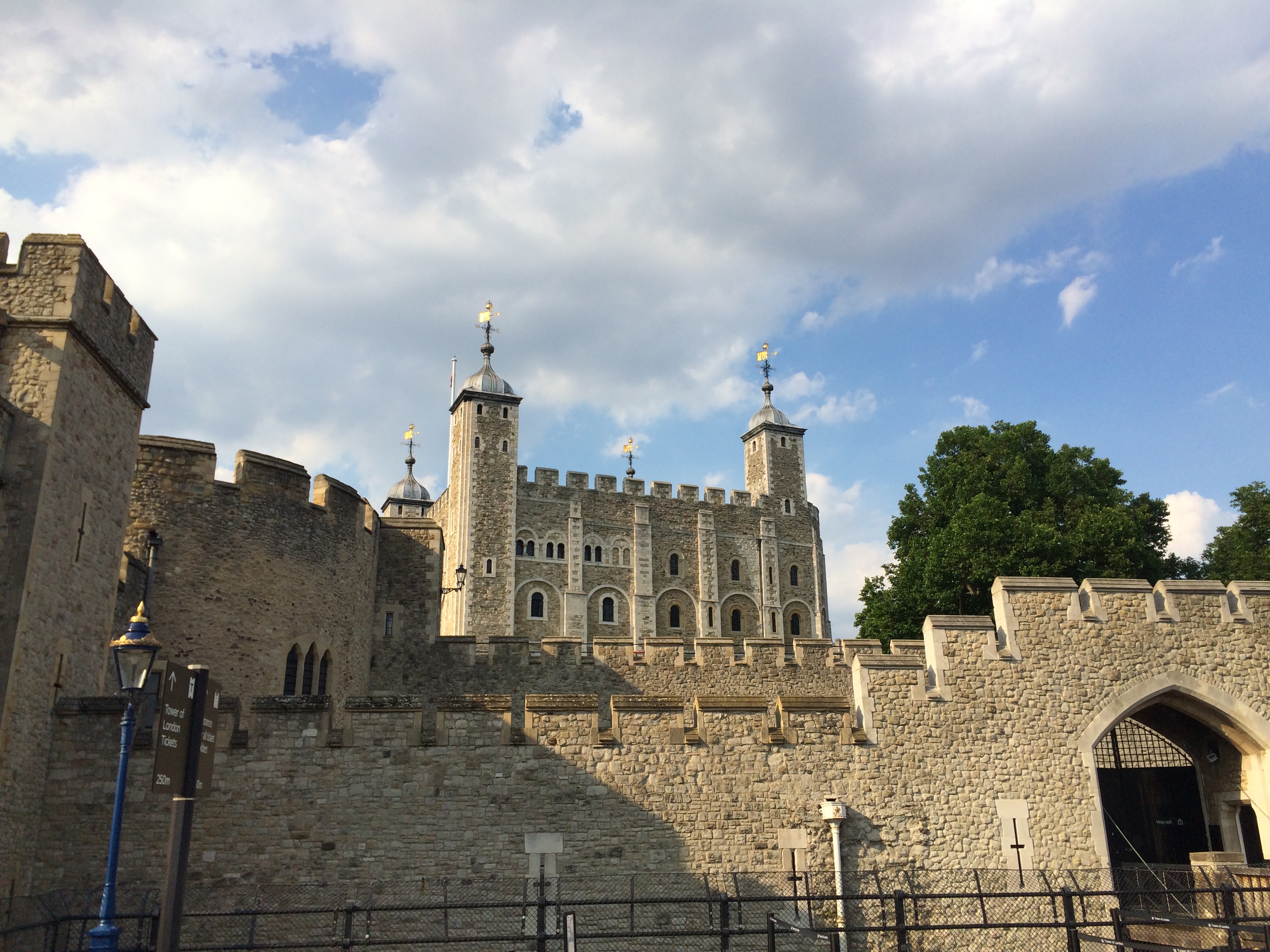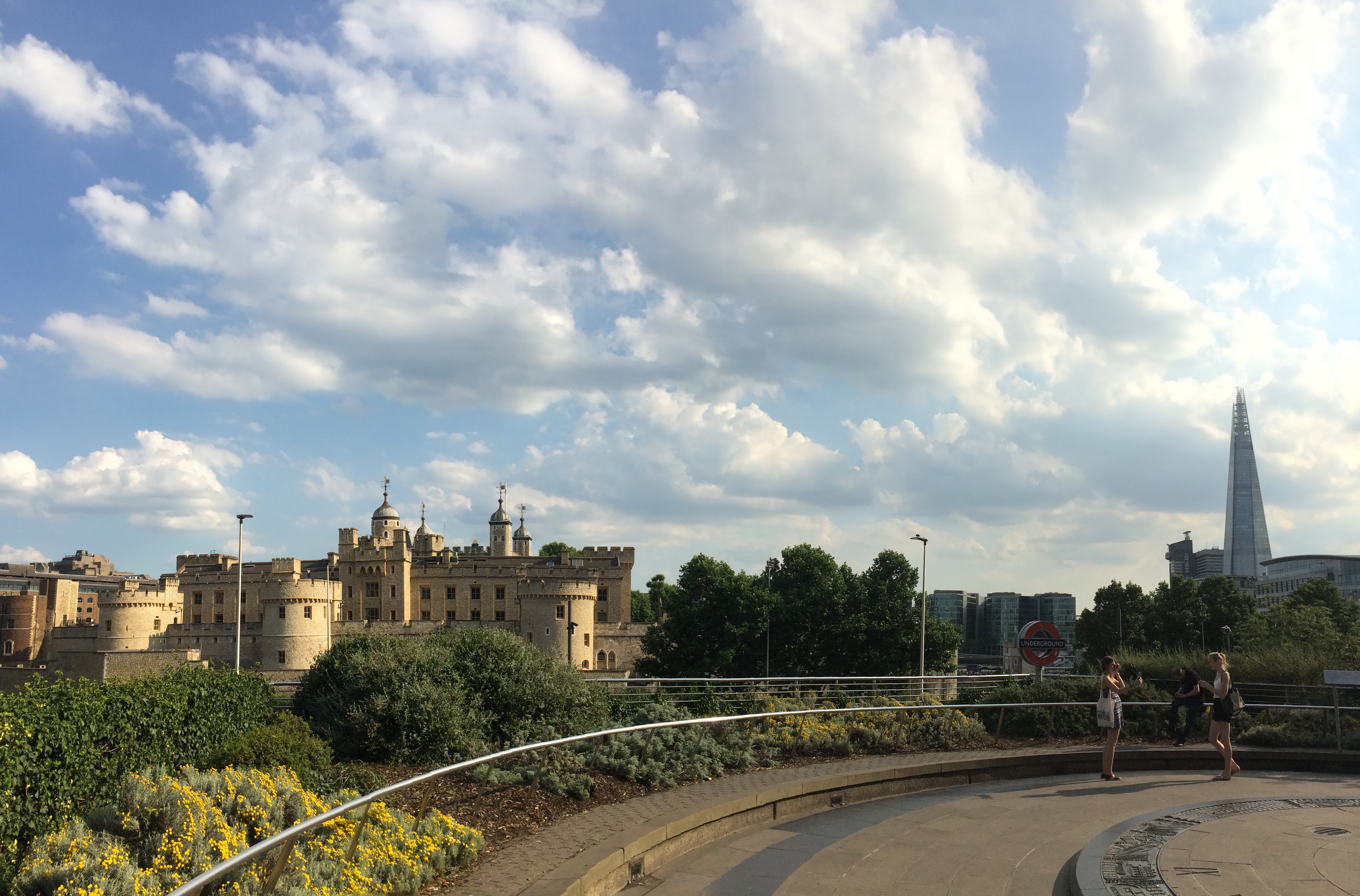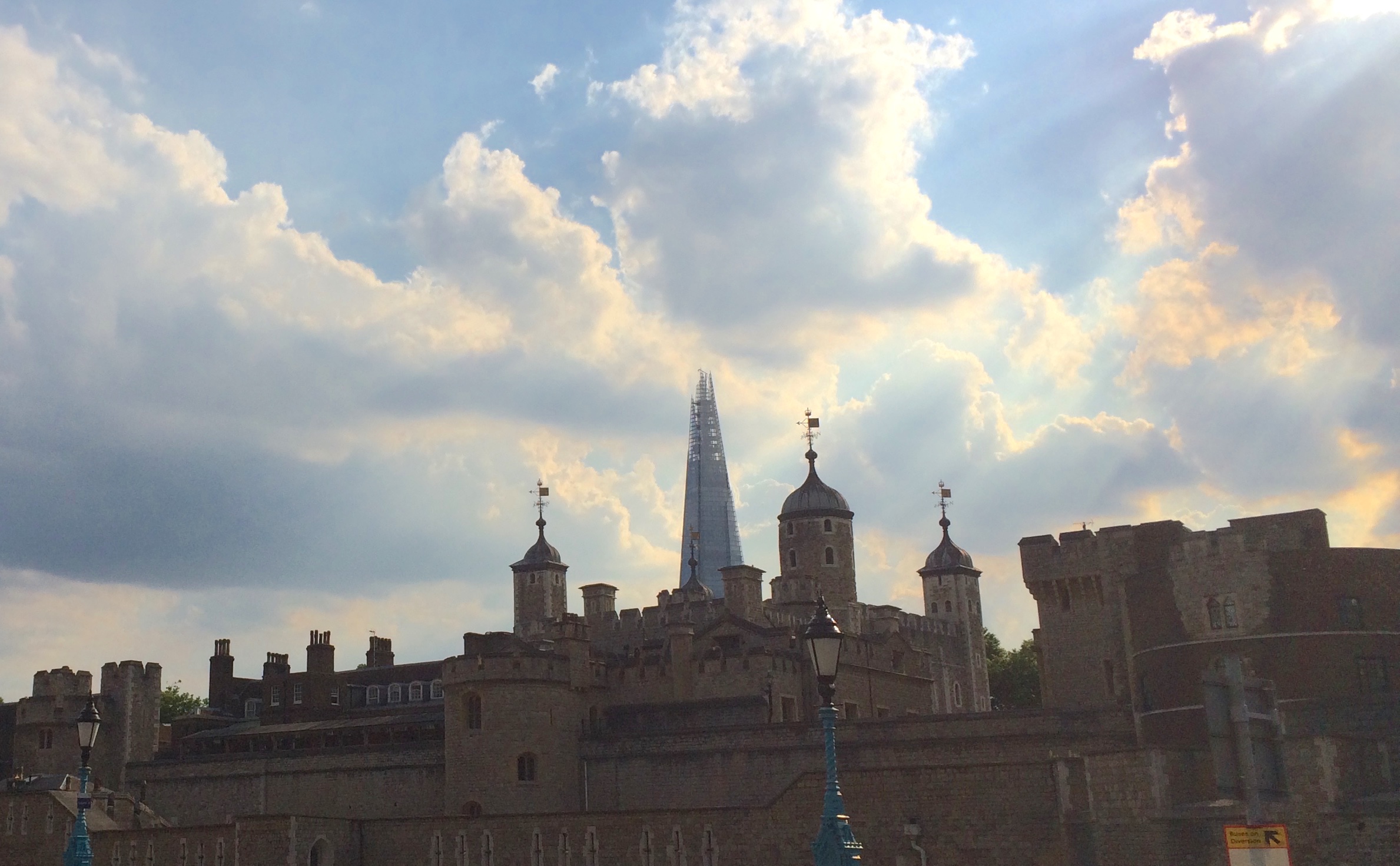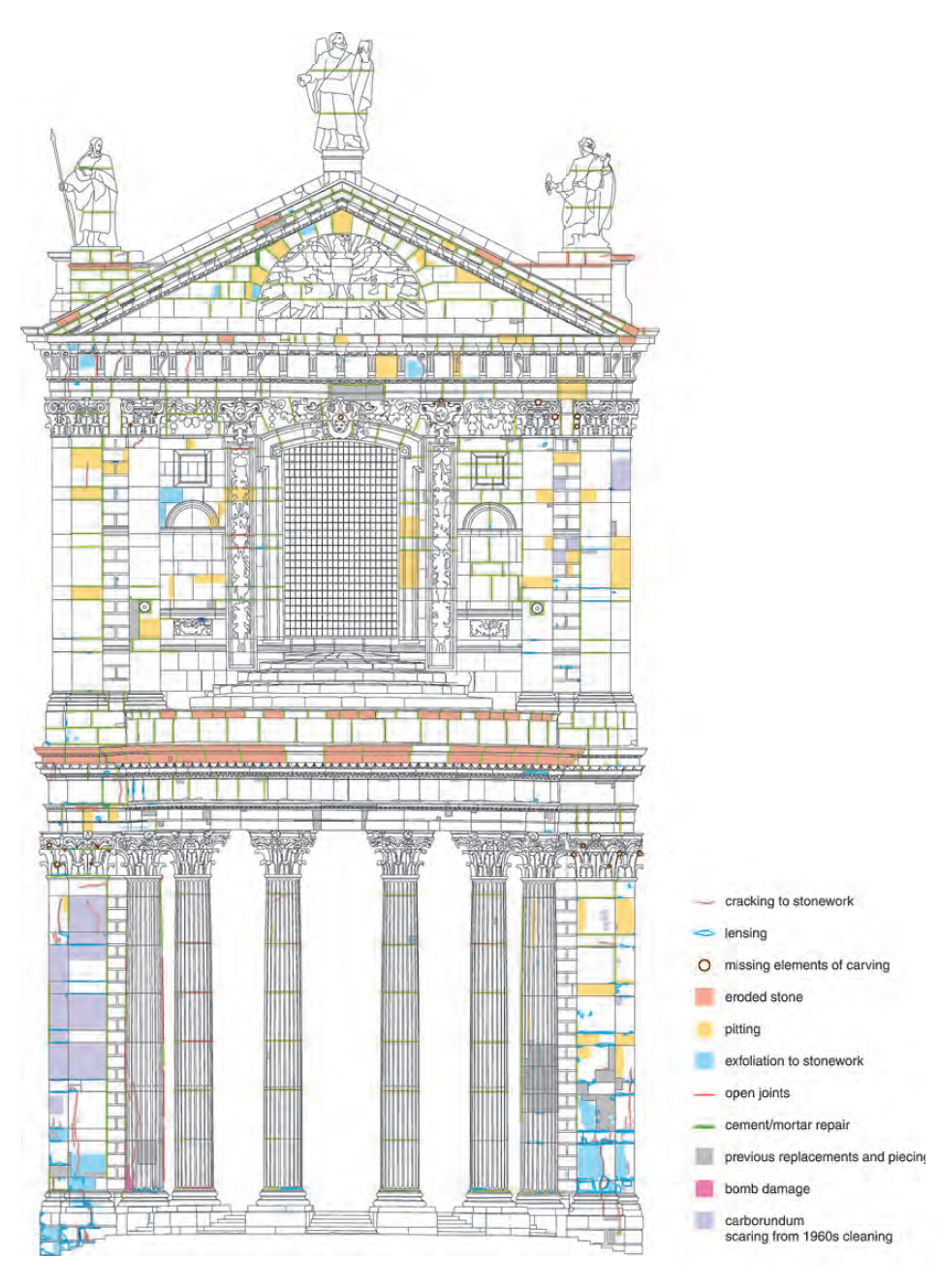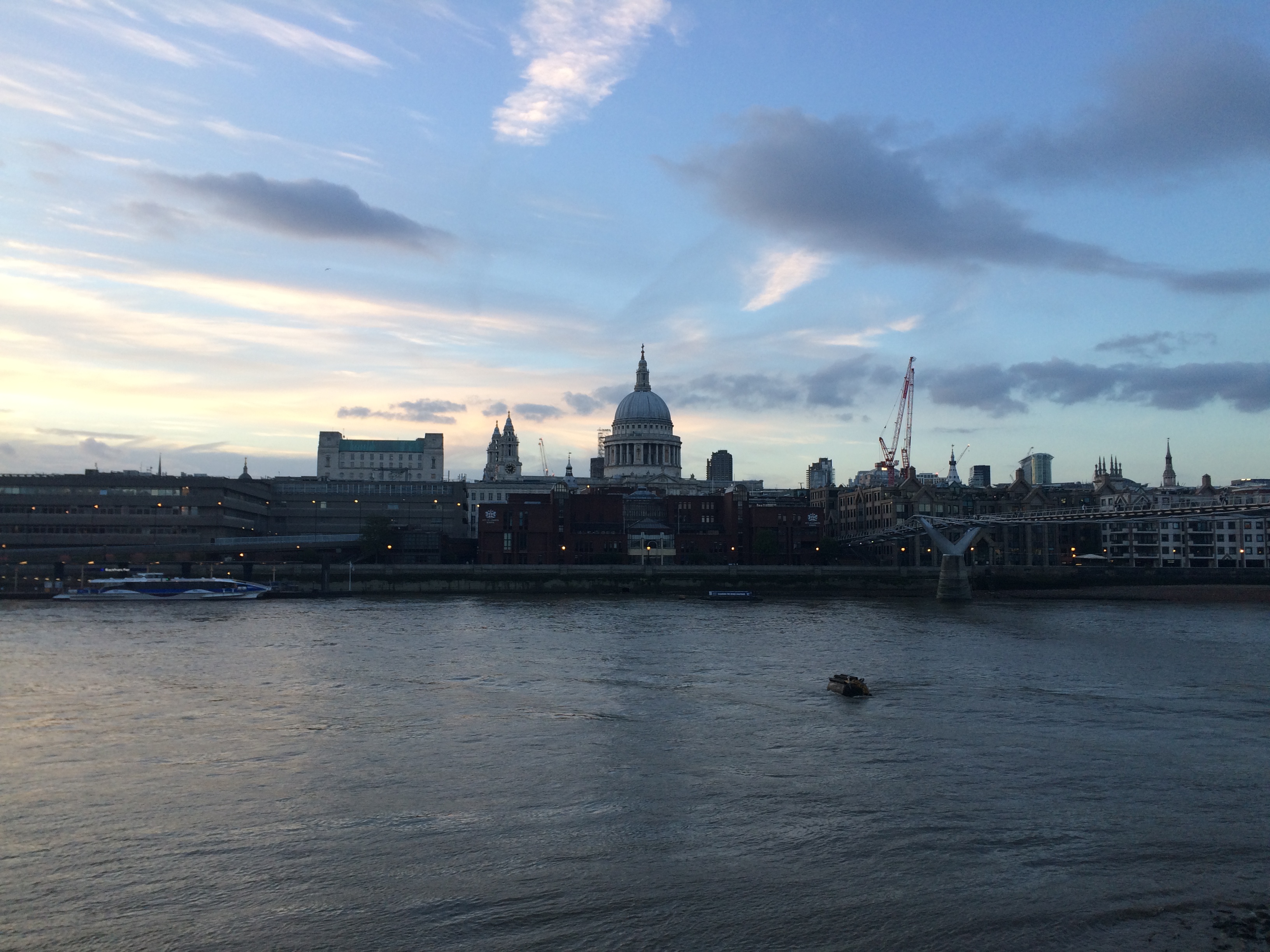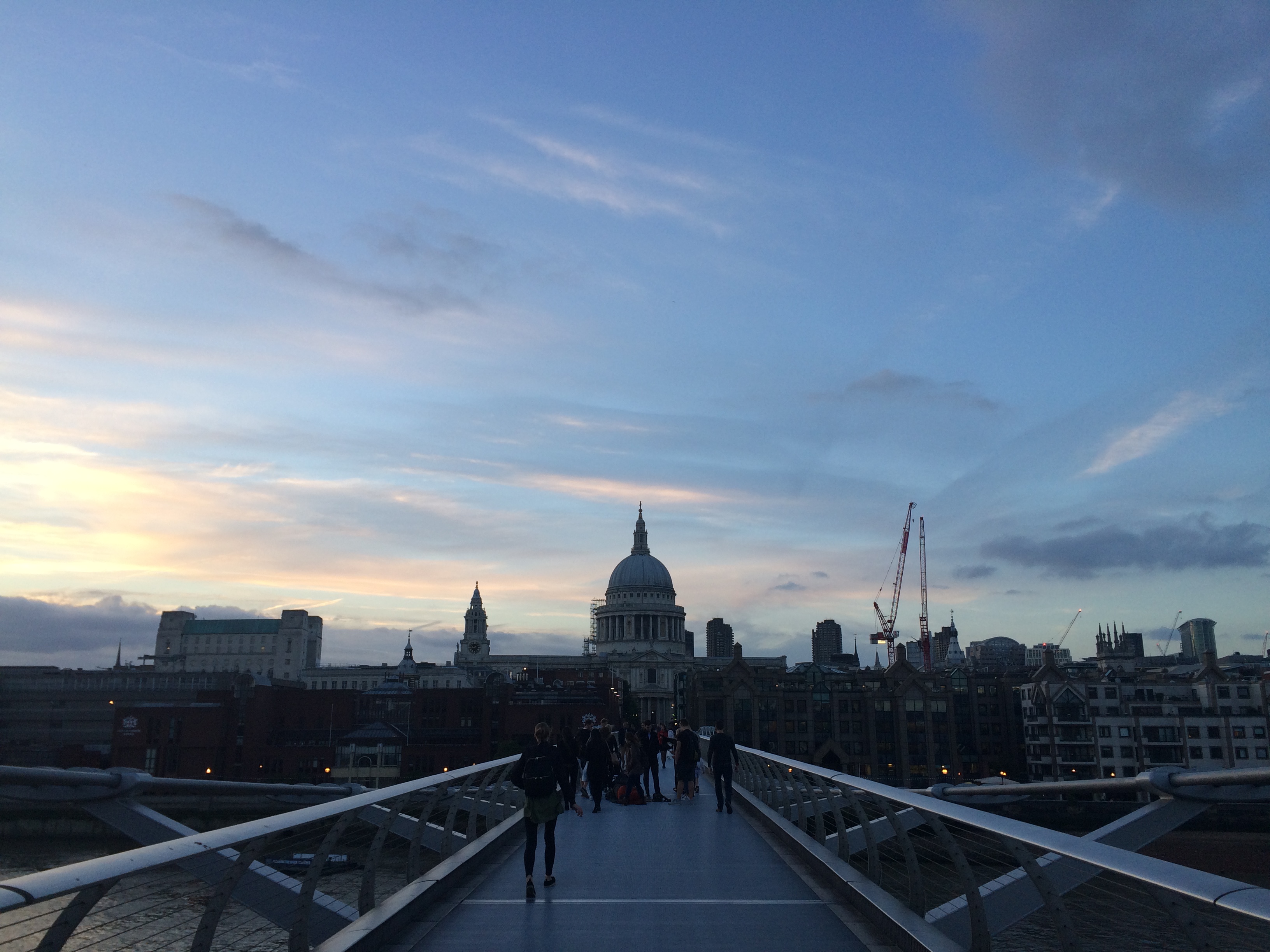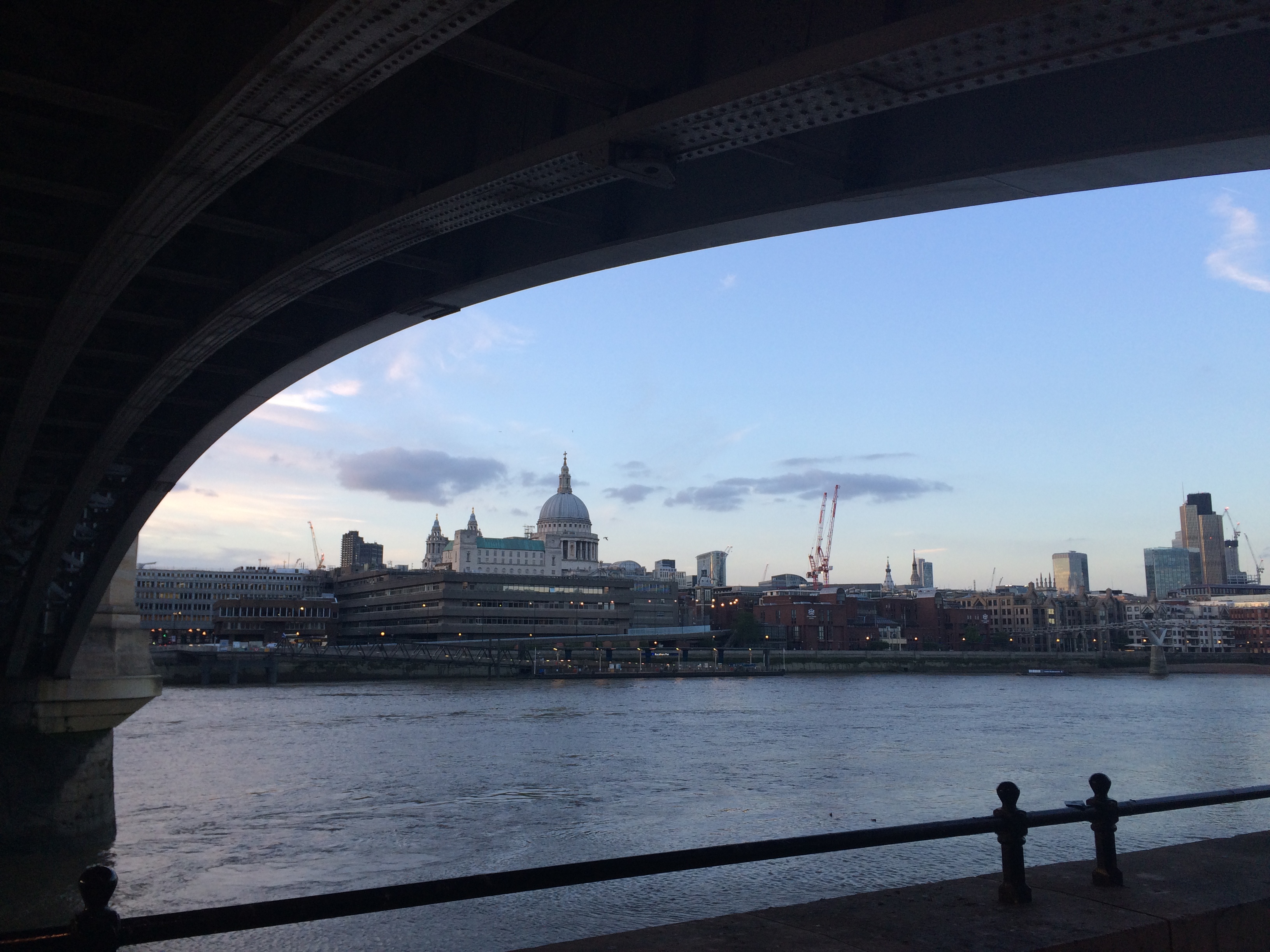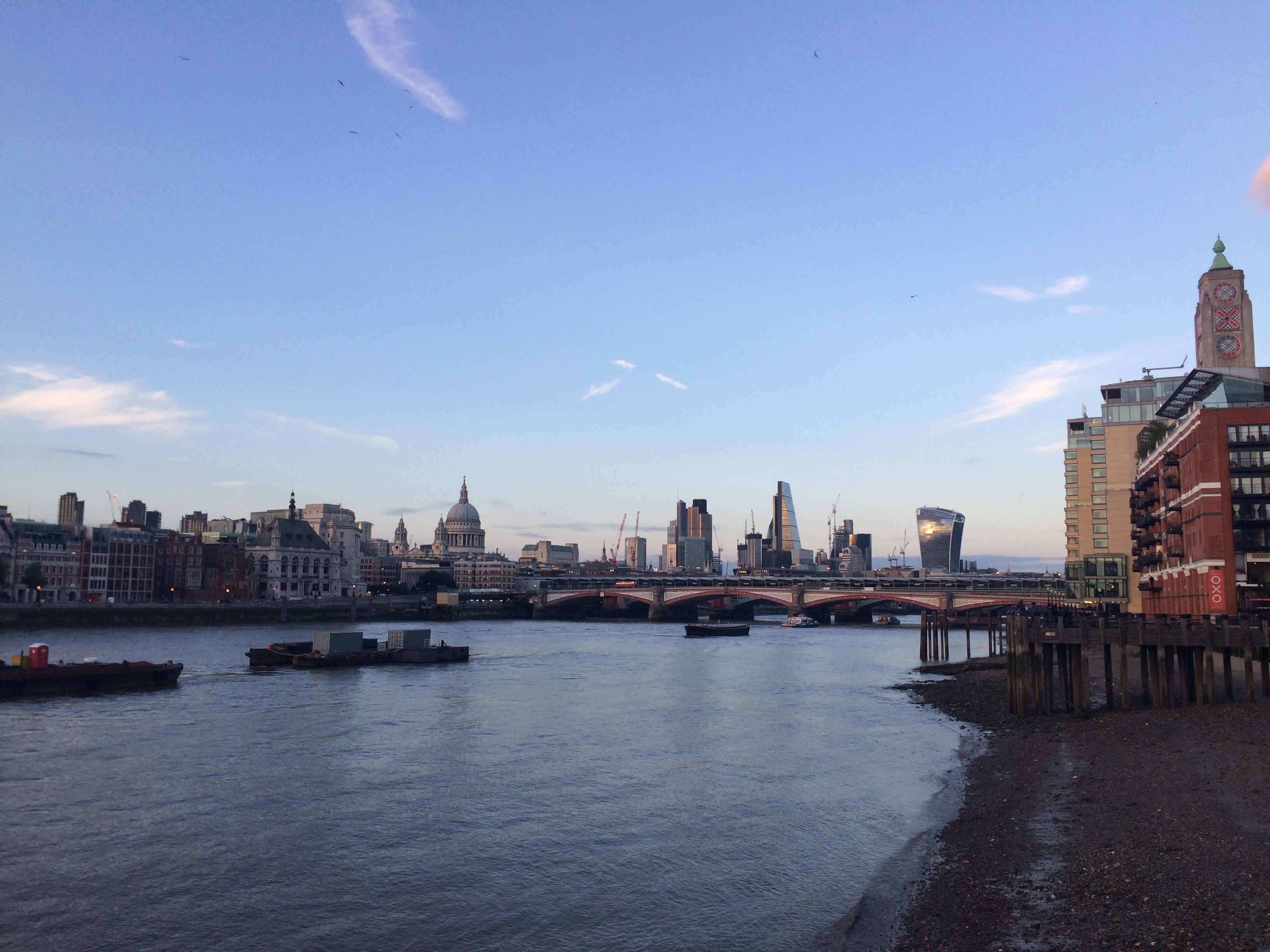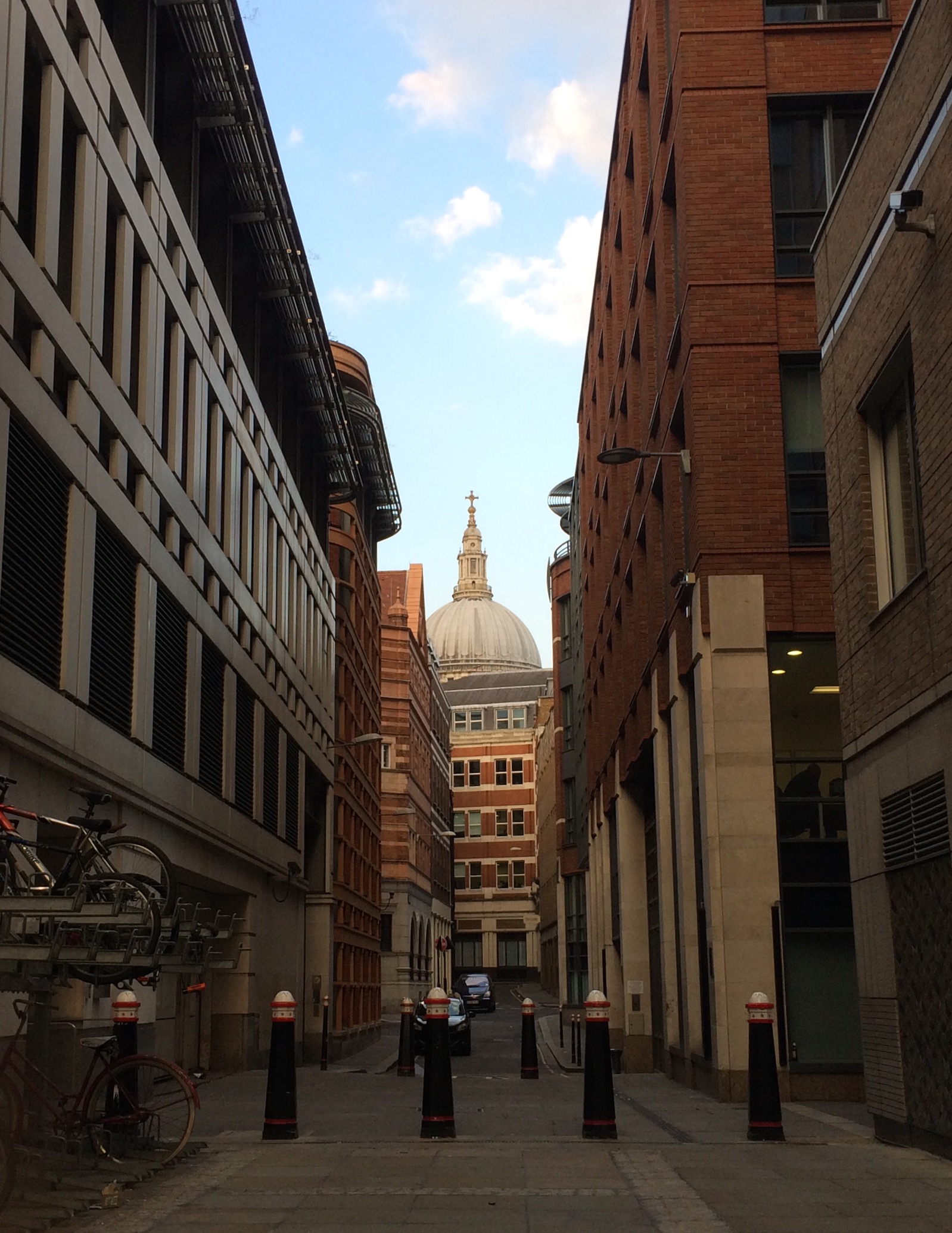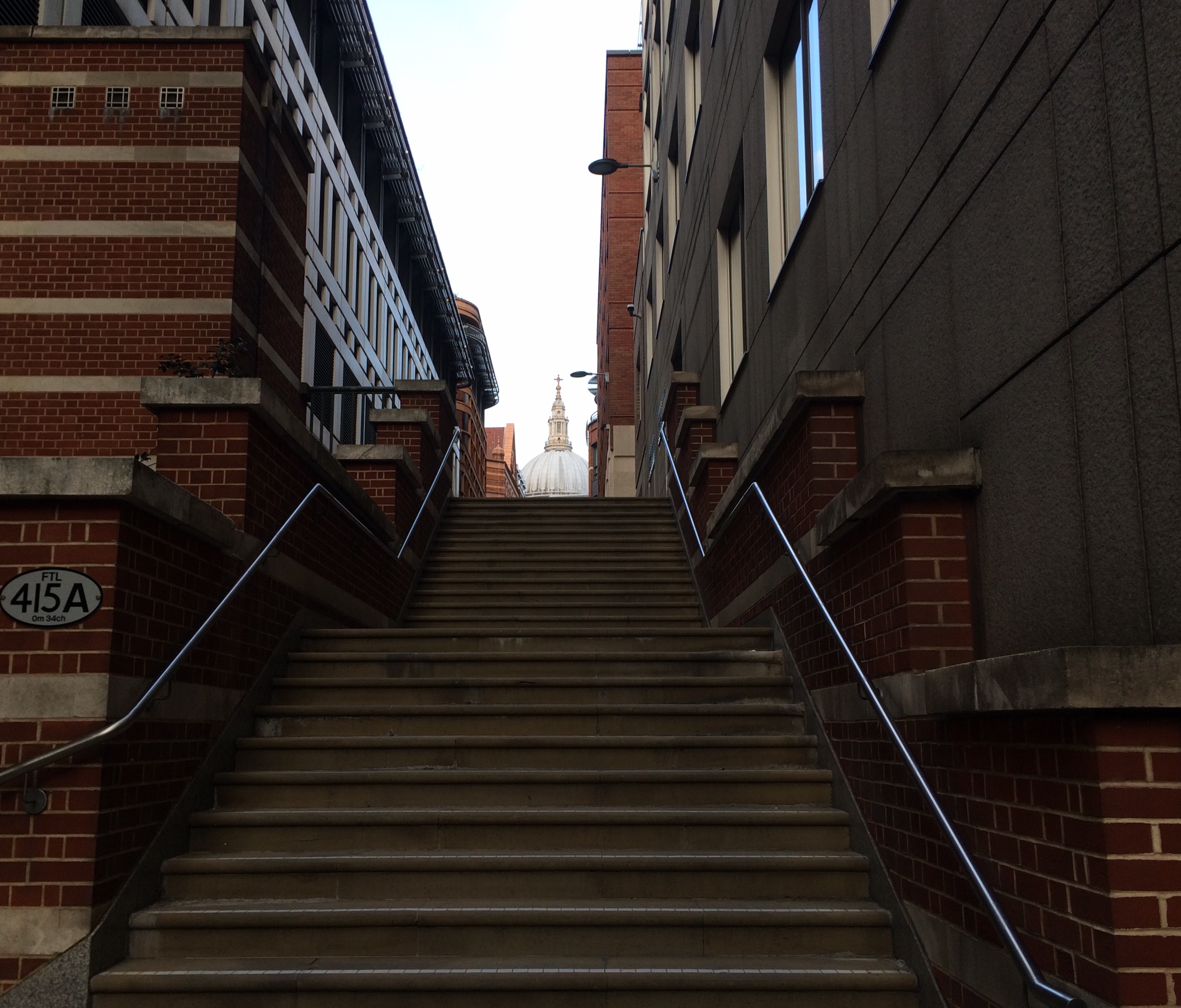Difference between revisions of "London's Architectual Preservation of History"
From Londonhua WIKI
(→Conclusion) |
(→Conclusion) |
||
| Line 100: | Line 100: | ||
=Conclusion= | =Conclusion= | ||
<br> | <br> | ||
| − | Architecture is a unique art-form in that it enables architects to instill ideas and ideals into part of the city, defining itself as well as it environment. Because of this, conservation work essentially seeks to preserve the character of the city. Conservation, as a result, defines a city in its attempts to maintain it. | + | Architecture is a unique art-form in that it enables architects to instill ideas and ideals into part of the city, defining itself as well as it environment. Because of this, conservation work essentially seeks to preserve the character of the city. Conservation, as a result, defines a city in its attempts to maintain it. London's emphasis on conservation seen in the cases made by Saint Paul's Cathedral and White Tower reflects an attitude of pride and resilience. A cathedral proudly standing for 342 years in place of the even more ancient Old Saint Paul's Cathedral that stood for centuries before it and a medieval castle nearing the age of a millennium deftly preserved and still in use; these two structures stand as monuments to the dedication and determination behind their collective conservation. Both examples of architecture, Norman and English Baroque, remain nearly unseen in London at such a preserved condition. As these structures demonstrate their value on the London landscape in such a physical way, I sought to capture and examine each sites characteristics and defining features through photography, utilizing photographic techniques to emphasize the ideas each building has come to represent. It was a pleasure to examine London architecture on a scale larger than each building itself, and through the lens of visual analysis. |
| − | |||
| − | |||
<br><br> | <br><br> | ||
Revision as of 21:35, 19 June 2017
London's Architectual Preservation of History
by Cole Fawcett
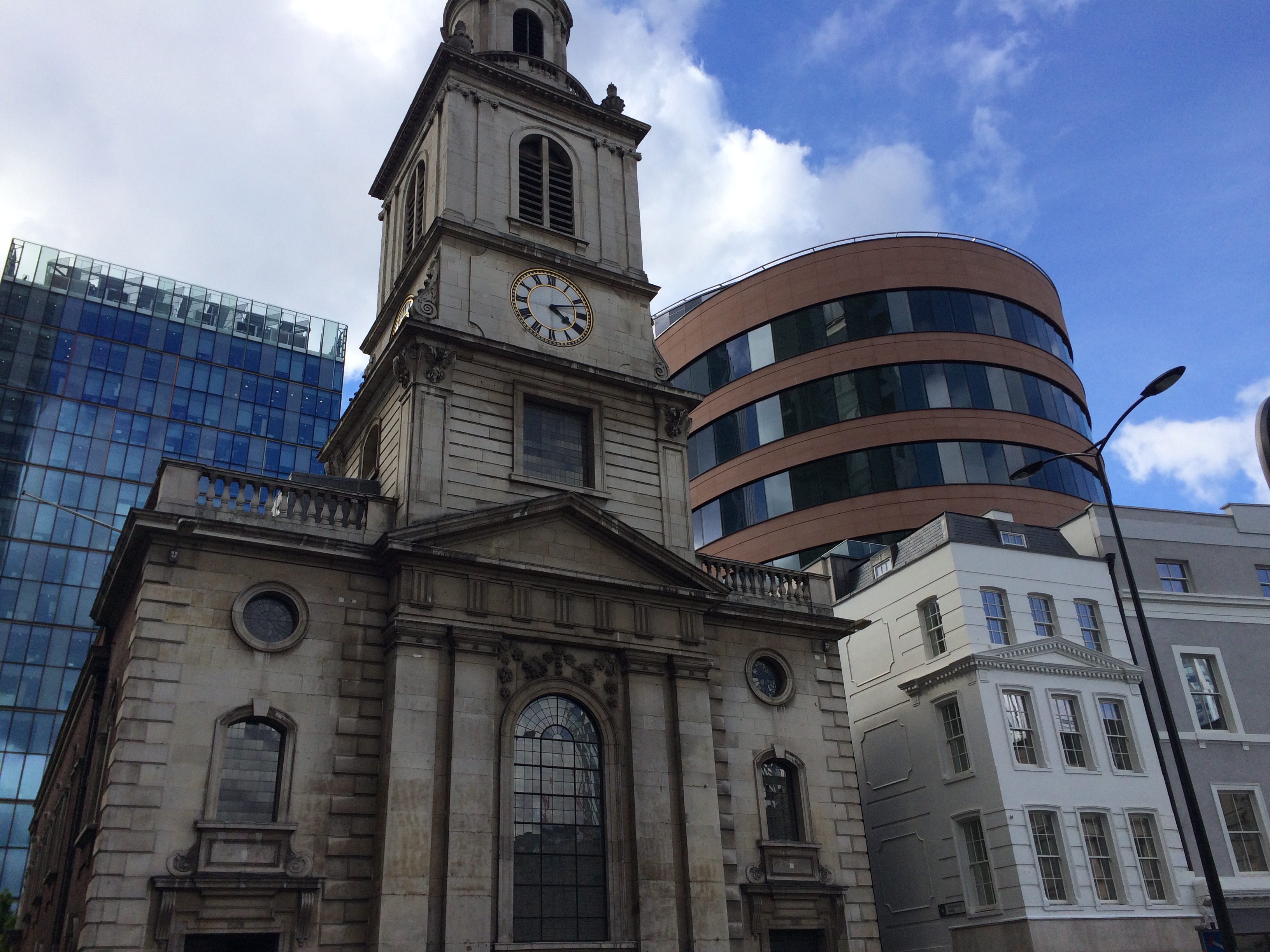 Perserving a Diverse and Complex City |
Contents
[hide]Abstract
This Milestone's aim is to address and analyze how and why London has successfully preserved and upheld its most ancient landmarks, rescuing them from natural erosion and deconstruction. To this end, I will research how Saint Paul's Cathedral and The Tower of London's White Tower remain standing today. I also hope to establish contact with current conservators of the Cathedral and Tower. Organizations like the Heritage of London Trust and The Institute of Historic Building Conservation, which also offer a reliable resource for understanding how London has committed itself so successfully to architectural preservation. In summary, this project seeks to portray a breakdown of what preservation and conservation of buildings of historical significance entails. The multimedia component of this milestone will be an informative pamphlet, two pages or so, detailing a how-to guide for modern urban-architectural preservation and conservation.
Introduction
This Milestone studies London's architectural preservation of history through two case studies on Saint Paul's Cathedral and White Tower, the central tower of the Tower of London. My aim is to inform on the modern state and significance of these buildings by largely visual means, rather than literary. Much of history is approached from a literary standpoint, taking the shape of textbooks and periodicals. However, exploring history and its significance to the modern era through literary means alone would be limiting. Though this milestone, my background forms the basis on which my deliverable gallery ought to be observed from. Insight can be drawn from understand both how these buildings came to represent perseverance and what that physically looks like. Utilizing on site photographs taken using a handheld camera, this project is uniquely informed by the experience of living in London.
This project was inspired by the last pages of chapter four of John Schofield's 'St Paul’s 1897–2013: protection and conservation.' On these pages, Schofield notes that the most recent means of conservation around Saint Paul's Cathedral has been a emphasis on not only maintenance of the cathedral itself, but views of the building. London, like all cities, must maintain a balance between the development of new buildings in the spirit of progressive innovation and the preservation of older buildings that stand as a testament to the city's history. These pressures are only further emphasized by limiting factors on space for urban development within London as a result of London's Green Belt, which is itself contained within the island of Great Britain. With such a long-running, rich English history to maintain, London errs more on the side of conservation. Nowhere is this made more apparent than in the cases made by Saint Paul's Cathedral and White Tower.
Cover what the project is and who cares in the first two sentences. Then cover what others have done like it, how your project is different. Discuss the extent to which your strategy for completing this project was new to you, or an extension of previous HUA experiences.
Section 1: Background
As long as buildings have existed, methods of preservation or conservation have developed to maintain architectural integrity. The United States' relatively youth means that the oldest landmarks date only several decades older than the country's independence less than three-hundred years ago. England's history dates back to basic agricultural civilization on the English landmass over two-thousand years ago. With much more history to preserve, the city of London today functions as a unique hub of structures ranging in style, construction, and repair. This milestone's central aim requires an in-depth examination of how London's oldest standing structure, the Tower of London's White Tower, and oldest church site, Saint Paul's Cathedral, have managed to adapt , grow and develop as sights of architectural achieve while maintaining a presence in the constantly evolving landscape of city. [1]
Saint Paul's Cathedral
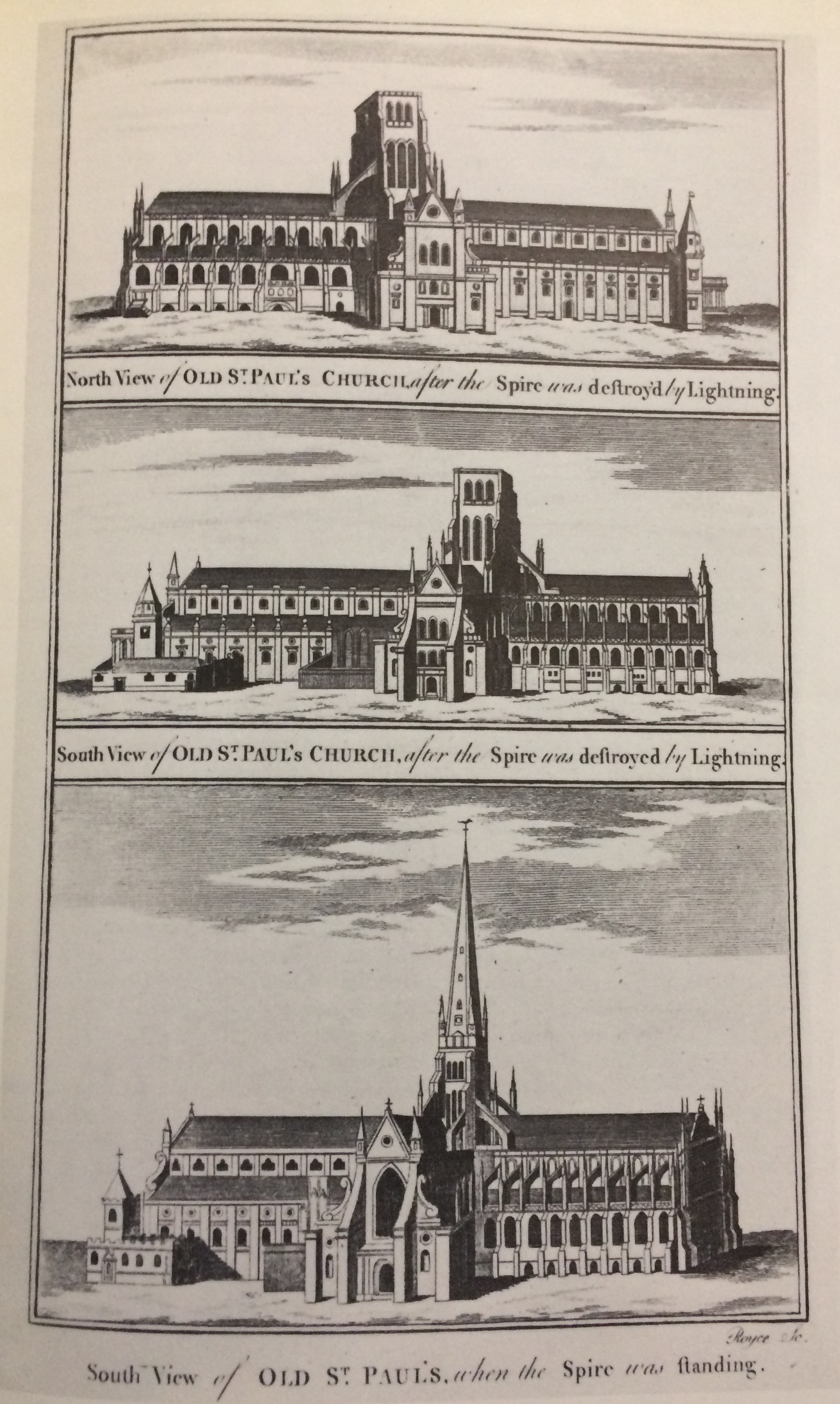
Saint Paul's Cathedral as a place of worship has presided as a monument for as long as records of the London area has been in existence. After the Britons fled from invaders in the southern English Isles to London sometime in the 1st century, historical records of London resurface in 604 C.E. These records note the founding of what comes to known as Old Saint Paul's Cathedral by Mellitus, bishop of London. Apart from monastic establishments, Saint Paul's stood as the only place of stately worship through the great fire of 1666 for the people of London. [3]Old Saint Paul's stood as the tallest church in all of London, standing at 586 feet and biggest at 72,460 square feet. Tragically, Elizabethean England(1558-1603 C.E.) took a rather careless attitude towards its architectural heritage. As a result, architectural conservation remained nearly unseen. A perfect example of such negligence lie in the example of Old Saint Paul's spire. Struck by a stray lightning bolt, Saint Paul's spire saw no attempt in restoring, what was at the time, London tallest architectural feat. While the roof was at the very least patched, no attempt was ever made to replace such an iconic feature of London's largest church. [4]
The Great Fire of London destroyed about four fifths of london, laying to waste 86 churches and a badly damaged Saint Paul's.
Fortunately, with the restoration of the monarchy in 1660 came a wealth of talented professionals poised to rebuild and replace the devastation of the Great Fire. Christopher Wren lied among these professionals, future designer and architect of modern Saint Paul's Cathedral. Building 51 churches and cathedrals across London, Wren's Saint Paul's distinguished itself as the cathedral with the largest undertaking. [5]
Wren was afforded such a entirely unique opportunity for urban redefinition, making the city into an 'architectural laboratory' for the development of the prodestant parish church. Saint Paul's itself attempted to and succeeded in crystallizing an ideal form of a prodestant cathedral.[6]
Early 20th Century and the Great War
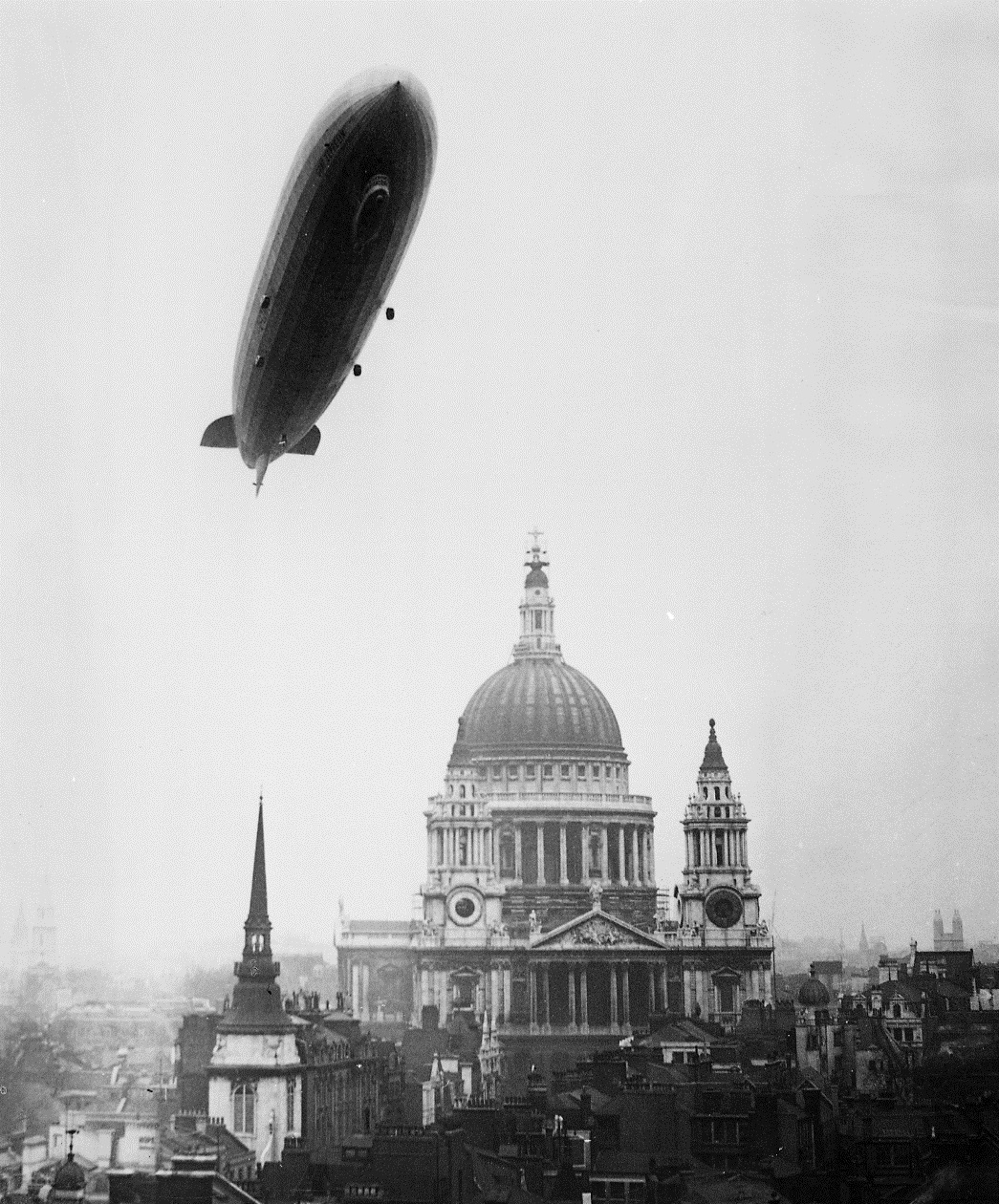
Saint Paul's Cathedral's surveyor, Somers Clarke (1897-1906), saw the structures entrance into the 20th century. At the time however, little to no conservation work was done on the cathedral outside of the addition of electric lights in 1899. Mervyn Macartney however, taking over over as surveyor through 1906-31, took as much more active role in conservation of the cathedral. Starting in 1909 with the insertion and installation of hot-water heating system for the building and later installing fire resistance partitions to the cathedrals iconic dome, Macartney started a trend of improvement and change only strengthened in the wake of the first World War.
To support the war effort, a searchlights was placed on cathedral land to scout for enemy fighters and the cathedral's Golden Gallery was utilized as a practice space for young soldiers to hone skills of signaling. On the 30th September, 1917, in a unfortunate turn-of-events, Saint Paul's Cathedral was struck 'by one of [England's] own shells, which landed on cornice of the south-east corner of the cathedral'. Luckily, the shell failed to cause any highly significant damage to the buildings facade or structure. At one point, the cathedral house a 18-pounder gun in the central choir section of the cathedral in 1918.
While helping country on the warfront, Saint Paul's Cathedral began to tackle its own problems presented with the turn of the second millennium it had seen come to pass. The impending question of the cathedral's came to the attention of conservation efforts. Engineer Sir Francis Fox, among other professionals, discuss the legitimacy of the building's structural stability. On the 25th of December, 1924, the District surveyor of the City of London served a 'Dangerous Structures Notice' that would put in motion a clear five year repair program focused on preserving and insuring the structural integrity of the cathedral. Another concern surrounding Saint Paul's between the two world wars had to do with the height of new office buildings that began to rise close to the cathedral. These buildings represented a threat, as more high-rise office buildings had the potential to obscure, or effectively erase, the famous Saint Paul's dome from the London skyline. Built in 1675 over the previous cathedral of the same name, built 1314, ? which itself was church built over the original Saint Paul's, This Cathedral holds a highly unique space and role in the history of London. As such, reverence beyond the aesthetic beauty of the building was channeled through Godfrey Allen (Surveyor 1931-56) in his proposal of a controlled area surrounding the cathedral. Established to protect and restore important views of the cathedral, the 1938 Saint Paul's Heights Controls made a clear effort to keep Saint Paul's Cathedral relevant in an increasingly modernizing world.[8]
World War II Damage
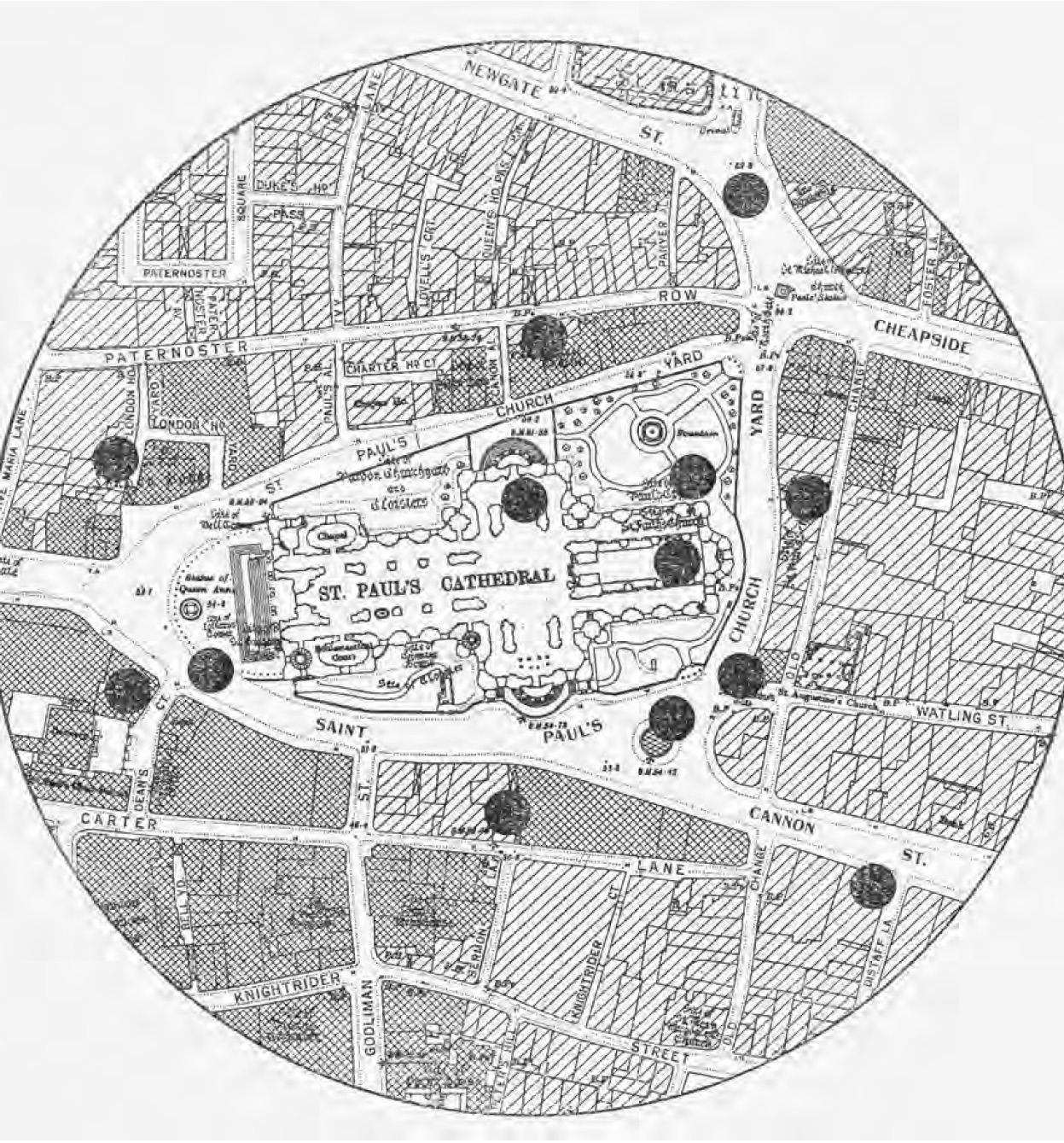
With one world conflict concluded and with the next on its way, Saint Paul's Cathedral prepared itself for a war that would nearly spell its destruction. Various preparations were made to defend against aerial bombardment. Aware of the sheer amount of devastation the evolved bombing of World War II would prove for London, grilles and some carvings from the choir aisles, the Great Model, wood carvings from the library, along with other fittings were all removed from Saint Paul's interior in preparation for the worst. Moved either to crypt or country homes distant from the city, these fittings were seen as valuable enough to remove under threat of enemy retaliation. Lord Nelson, Christopher Wren and the Duke of Wellington's monument were encased in brick in the cathedral's crypt for extra precaution.
All this effort to preserve what could be preserved in the event of catastrophe proved warranted as twelve to thirteen bombs fell inside a single block radius of the cathedral. Of these, six bombs fell within cathedral property, with two direct strikes to the actual cathedral itself. Remarkably however, the building remained standing after the war had ended. Outside of a few holes in the cathedral ceiling and damage to the exterior, the building as a whole appeared miraculously unharmed after the numerous attacks against London over the course of the war. In 1946, Dean Walter Matthews remarked that there was 'little doubt that [Saint Paul's Cathedral's] supports to the effect of the blast could not have happened but for the work of repair and consolidation which had so recently been carried out', referring to the five year conservation efforts carried on a decade prior. Through its miraculous prevailing through war-torn London, Saint Paul’s Cathedral had become a symbol of national survival through the War, adding well to its already considerable stock of symbolic roles.[10]
Improvement in the Post-War to Present era
Following the destruction and devastation met in the 1940s, work to strike a balance between bringing the cathedral into the 21st century and preserving the building as a national landmark has dominated conservation efforts. With this lofty ideal of balance, controversy found a holding in discussions of conservation fairly early on. In 1966, the method approached in cleaning the cathedral's exterior caught criticism from British architectural critic, Ian Nairn. Disgruntled on how the building's upper exterior was cleaned, Nairn complained that "because soot and Portland stone work such a funny magic on each other, St Paul’s should never have been cleaned. The scrubbed parts show a small gain in clarity of detail and an immense loss in personality."[11] Under Sir Bernard Feilden (Surveyor 1969–77), Saint Paul's gained a elevator, made significant repair to the buildings upper levels, and found itself faced with problems of air pollution and traffic vibration. After a thorough study of the external stonework, Feilden concluded the operation of the Bankside Power Station, built not long after WWII, was responsible for damaging Saint Paul's Cathedral. After shutting down, the Bankside Power Station became modern-day Tate Modern, just across the Thames from Saint Paul's to this day.
In the following decades, relatively few major conservation works were undertaken until the 1990s. In 1993, Martin Stancliffe (Surveyor 1990-2011) produced a "Quinquennial Report," proposing several immediate and long-term programs of cathedral repair, maintenance and improvement. Most of the major projects of the next two decades were either proposed or hinted at in this Report: stonework repair and cleaning of the exterior, a cleaning of the entire interior, the liturgical reordering and relighting of the interior, and a staged bringing of the entire crypt into public use together with extensive facilities for staff , choir and educational purposes.[12]
Contemporary movements in modernizing and making the city of London an attractive place to live have encouraged further conservation action. Designated in 2007, St Paul’s Cathedral Conservation Area was established to maintain the character of land uses, building and materials types, open spaces and trees, the use of the area for local and national cultural and political events, ecology and archaeology. Along with this, efforts on behalf of the city have been made add and preserve iconic views of the cathedral. Conservation, and with it a degree of controversy, continues to surround Saint Paul's Cathedral into the present day. In spite of these new challenges Saint Paul's Cathedral is dealt, the building continues to to serve as an exemplary space for gathering, reflection, and beauty. [13]
White Tower

Located within the fortress of the Tower of London, White Tower presides as one of world's best known castles. Given its name around 1100 C.E., the Tower stands today as the most complete palace in Europe. A brilliant example of Norman architecture, the Tower represents poignant evidence of early 14th century Norman influence in the British Isles. [15]Strongly fortified, the square tower perches itself at the center of a defensive work of architecture, evoking stark medieval strength.[16] White Tower stands as London's second largest tower of its age after Colchester tower at four stories connected via angle turrets at the building's corners. [17]Access to the each floor was possible via the circular north-east turret, with the main entrance on the middle floor, on the south face, still used today.[18] Over the years, however, the structure itself has been heavily reconstructed to retain its original shape and structure.[19]
However, despite the Tower's imposing reputation, the first legitimate systematic investigation of the structure took place only 20 years ago. From 1996 to 1998, White Tower was emptied for new displays and conservation works on the external south elevation, allowing a thorough rundown of the structure with modern methods for scientific analysis. A second round of investigation was only just recently done in 2008 to 2011, while cleaning and conservation of other cardinal elevations and turrets were taking place. The second analysis served to support earlier findings in 1996-8 and expanded in extent, form, and dating of post-medieval alterations and repairs. Previous to these studies, White tower was widely believed to have had more or less remained largely intact from the late 11th century, while others argued the tower evolved in scale over time. With these investigations findings, historians can settle several mysteries concerning the Tower's original plans and construction. These studies found that the structure was largely completed by circa 1100 C.E., with its final design being conceived from outset of the project. It was discovered that raising the roofs of the east and west rooms of the second floor by a story was the one lasting major alteration made to the building. Lastly, analysis has found that there was a significant pause in the primary construction, midway through the first floor, seen in changes in material and technique and in the sculptural detail of St. John's Chapel. Work apparently began around 1078 but only completed by 1100, with a break from 1079-83 to 1090-3.[20]
Section 2: Deliverable
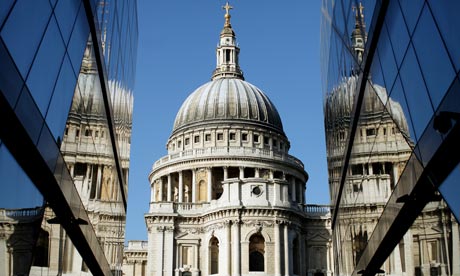
Creating and Preserving a Landmark
In an attempt inform on the influence and presence Saint Paul's Cathedral and White Tower command as monuments of architectural history, I set about using photography to capture and display visually the various ways these buildings fit into the city of London. Within this, I sought to encapsulate the feeling of reverence towards these structures, each monuments of their respective eras of English history. Saint Paul's Cathedral has retained its current appearance over the past three-hundred forty-two years and White Tower has stood since circa 1100 C.E. With time, naturally comes change. I chose these two unique buildings not simply for their age, but also the perseverance they represent. These buildings stand out against their surroundings, boasting uncommon architectural styles of English Baroque and Norman, respectfully. The goal of this milestone is to answer the question: "How were these structures conserved and what that means?". My answer comes in the form of a comprehensive gallery meant to inform through a deliberate, guided camera lens.
My approach to White Tower examines the tower's most striking and defining feature, the structure's age. As a direct result of how old White Tower is and appears, every building surrounding the Tower of London serves as a sharp contrast. When compared to a 12th century fortress, buildings like London's Shard and Gherkin look more like science fiction that post-modern architecture. As London's oldest standing structure, the tower has gone through extensive conservation efforts to keep the building stable and operational. My gallery of the White Tower highlights these realities of the tower, each tackling a specific feature. Moving right from the sketched plans for the Tower of London, the gallery's first picture pins the tower between the distant features of the modern urban environment and the closer lush influence of the Tower of London's trees. Through this framing, the white tower allows itself to be perceived as much more of a piece of the landscape, rather than an ornament to it. The second picture simply seeks to portray the tower as a monument to itself. With an age harking back to the middle ages, by picturing the White Tower in this way, the view is draw to examine the preserved stone make-up of the tower raw façade. The third picture highlights the contrasting color and geometry between the tower on left and the tower on the right. This separation in years, styles, and shape all manifest as the physical distant depicted in this shot. The fourth picture presents the same subject matter but this time juxtaposing the two very directly. The light, focus, and composition favors the towering figure of London's Shard above the White Tower. However, the entire Tower of London also appears more vast and stable than the Shard's thin frame. By the use of photography techniques, a picture is able to convey intent along side the literal material presented. In my gallery for Saint Paul's Cathedral, photographic composure is further emphasized.
Throughout my background, I detail the conservation methods and approaches to Saint Paul's over the last hundred years, combating and persevering against dilemmas from pollution to air-raids. The legacy of Old Saint Paul's Cathedral survives by its modern equivalent, serving as a place of community, solidarity, and pride for Londoners. In the pictures below, I set about framing the cathedral, in a very real sense, within its modern context. The first picture from the Old Saint Paul's Cathedral sketches catches the cathedral engulfed and absorbed by its environment. With the dark blue shade of the Thames reflecting the light blue of the sky, the whole shot embodies a cohesive theme. While Saint Paul's signature baroque dome defines the city skyline, It doesn't dominate the entire shot. Room is left for other buildings in the distance to mark their shape on the cities outline. Through this, the Saint Paul's Cathedral can be seen as 'one of many.' The next picture serves as a deliberate contrast to the first picture. The sharp handrails of Millennium Bridge lead the viewers eyes towards that same famous dome with authority. Saint Paul's unique English Baroque architecture and size are emphasized in this shot as the building is framed in an effort to draw in its potential audience, a feature clearly calculated by the bridge's engineers. The gallery's next picture appropriately follows the previous picture's momentum. In this closer shot more direct comparison can be made between the cathedral and the surrounding architecture. The sharp corners and square geometry of the both sides of the shot oppose, in in that further emphasize, the uncommon smooth curvature and classical influence that Saint Paul's channels. mirroring to the previous picture, the roof of the contemporary buildings serve to direct focus away from themselves and towards the 342 year old cathedral sitting comfortable at the center of the shot. Departing from the thematic consistency of the first three pictures, the next picture frames Saint Paul's with modern architecting from all sides. The entirety of building seems clearly out of place, standing out as the only white stone building in the shot. Buildings composed of concrete, red brick, glass, and steel dominate the scene's landscape. Metal construction cranes rise on opposite sides of the cathedral while the most striking element of the picture, the overbearing steal beams of the overhead bridge, appears to be completely trap this article of the past in London's urban modernity. The next shot resembles the first picture in many ways but provides a wider scope to take in the city as a whole. From the riverside, London's iconic features are set on display upon a level playing-field; that is to say, Saint Paul's, the Leadenhall Building, and the Walkie-Talkie all appear around the same size agains the horizon. Almost the exact opposite of the previous picture, this shot showcases Saint Paul's Cathedral as a vital, defining feature of and testament to London as a capital and international city. The last two pictures of this gallery take a much more personal approach to experiencing Saint Paul's. Before coming to London, I did very little research into the buildings that define the city's skyline. Because of this, I was unsure of what to expect on Wednesday, May 10th, when my group was scheduled to visit Saint Paul's Cathedral. Walking from our flats, my group decided to take a small alley staircase to get to the cathedral quicker. These last two pictures represent how I first saw Saint Paul's Cathedral here in London that Wednesday morning. From the perspective of the alley way, the second-last shot captures much of what the previous pictures have touched on: focused perspective, modern context, unique architecture, London icon, and so on. The last picture in this gallery distinguishes itself with its approach of blatant honesty. The only visible part of Saint Paul's Cathedral is its dome, a pale blue bulb in an otherwise blank sky. The stairs, surrounding buildings, and lampposts all serve to create a frame-within-a-frame, emphasizing the uniqueness of the cathedral against the dark simplistic foreground. Through this lens, the idea of Saint Paul's Cathedral persists. Conservation and preservation efforts over the past three centuries allowed Christopher Wren's masterpiece survive and be revered to this day. Saint Paul's Cathedral isn't simply significant historically and religiously to London, the building itself is physically significant to defining London's shape and character.
Gallery
White Tower
Tower of London historical plans[24]
Saint Paul's Cathedral
Old Saint Paul's Reference Sketches[26]
Conclusion
Architecture is a unique art-form in that it enables architects to instill ideas and ideals into part of the city, defining itself as well as it environment. Because of this, conservation work essentially seeks to preserve the character of the city. Conservation, as a result, defines a city in its attempts to maintain it. London's emphasis on conservation seen in the cases made by Saint Paul's Cathedral and White Tower reflects an attitude of pride and resilience. A cathedral proudly standing for 342 years in place of the even more ancient Old Saint Paul's Cathedral that stood for centuries before it and a medieval castle nearing the age of a millennium deftly preserved and still in use; these two structures stand as monuments to the dedication and determination behind their collective conservation. Both examples of architecture, Norman and English Baroque, remain nearly unseen in London at such a preserved condition. As these structures demonstrate their value on the London landscape in such a physical way, I sought to capture and examine each sites characteristics and defining features through photography, utilizing photographic techniques to emphasize the ideas each building has come to represent. It was a pleasure to examine London architecture on a scale larger than each building itself, and through the lens of visual analysis.
References
- Jump up ↑ Teutonico, J and Fidler, J (1998). Time for Change: An Overview of Building-Materials Research for Conservation ofHistoric Structures. New York: Association for Preservation Technology International (APT)., pg. 45-9.
- Jump up ↑ Johnson, P. (1980). British Cathedrals. London: Weidenfeld & Nicolson.
- Jump up ↑ Blatch, M. (1978). "A Guide to London's Churches". London: Constable and Company Ltd.
- Jump up ↑ Johnson, P. (1980). British Cathedrals. London: Weidenfeld & Nicolson.
- Jump up ↑ Blatch, M. (1978). "A Guide to London's Churches". London: Constable and Company Ltd.
- Jump up ↑ Bradley, S., & Pevsner, N. (1998). London: the city churches. London: Penguin Group.
- Jump up ↑ Edgar Jones, 19 January 2015 - Defence and conflict, First World War, No 10 guest historian series. (n.d.). Air-raid casualties in the First World War. Retrieved June 11, 2017, from https://history.blog.gov.uk/2015/01/19/air-raid-casualties-in-the-first-world-war/
- Jump up ↑ Schofield, J (2016). St Paul's Cathedral:archaeology and history. New York: Oxbow Books., ch. 4.
- Jump up ↑ Schofield, J (2016). St Paul's Cathedral:archaeology and history. New York: Oxbow Books., ch. 4.
- Jump up ↑ Schofield, J (2016). St Paul's Cathedral:archaeology and history. New York: Oxbow Books., ch. 4.
- Jump up ↑ Schofield, J (2016). St Paul's Cathedral:archaeology and history. New York: Oxbow Books., ch. 4.
- Jump up ↑ Schofield, J (2016). St Paul's Cathedral:archaeology and history. New York: Oxbow Books., ch. 4.
- Jump up ↑ Schofield, J (2016). St Paul's Cathedral:archaeology and history. New York: Oxbow Books., ch. 4.
- Jump up ↑ "Hampstead Parochial Church of England Primary School." Hampstead Parochial RSS 092. Hampstead Parochial, n.d. Web. 17 June 2017.
- Jump up ↑ Bradley, S., & Pevsner, N. (2002). London 1: the City of London. New Haven: Yale University Press.
- Jump up ↑ Sutton, I. (1999). Western architecture. London: Thames & Hudson.
- Jump up ↑ Bradley, S., & Pevsner, N. (2002). London 1: the City of London. New Haven: Yale University Press.
- Jump up ↑ Harris, R (2016). Castles and the Anglo-Norman World. New York: Oxbow Books., pg. 177-189.
- Jump up ↑ Sutton, I. (1999). Western architecture. London: Thames & Hudson.
- Jump up ↑ Harris, R (2016). Castles and the Anglo-Norman World. New York: Oxbow Books., pg. 177-189.
- Jump up ↑ (n.d.). Retrieved May 18, 2017, from http://www.ikoniclifts.co.uk/resources/case-studies
- Jump up ↑ "Hampstead Parochial Church of England Primary School." Hampstead Parochial RSS 092. Hampstead Parochial, n.d. Web. 17 June 2017.
- Jump up ↑ Harris, R (2016). Castles and the Anglo-Norman World. New York: Oxbow Books., pg. 177-189.
- Jump up ↑ Bradley, S., & Pevsner, N. (2002). London 1: the City of London. New Haven: Yale University Press.
- Jump up ↑ Schofield, J (2016). St Paul's Cathedral:archaeology and history. New York: Oxbow Books., ch. 4.
- Jump up ↑ Bradley, S., & Pevsner, N. (2002). London 1: the City of London. New Haven: Yale University Press.
